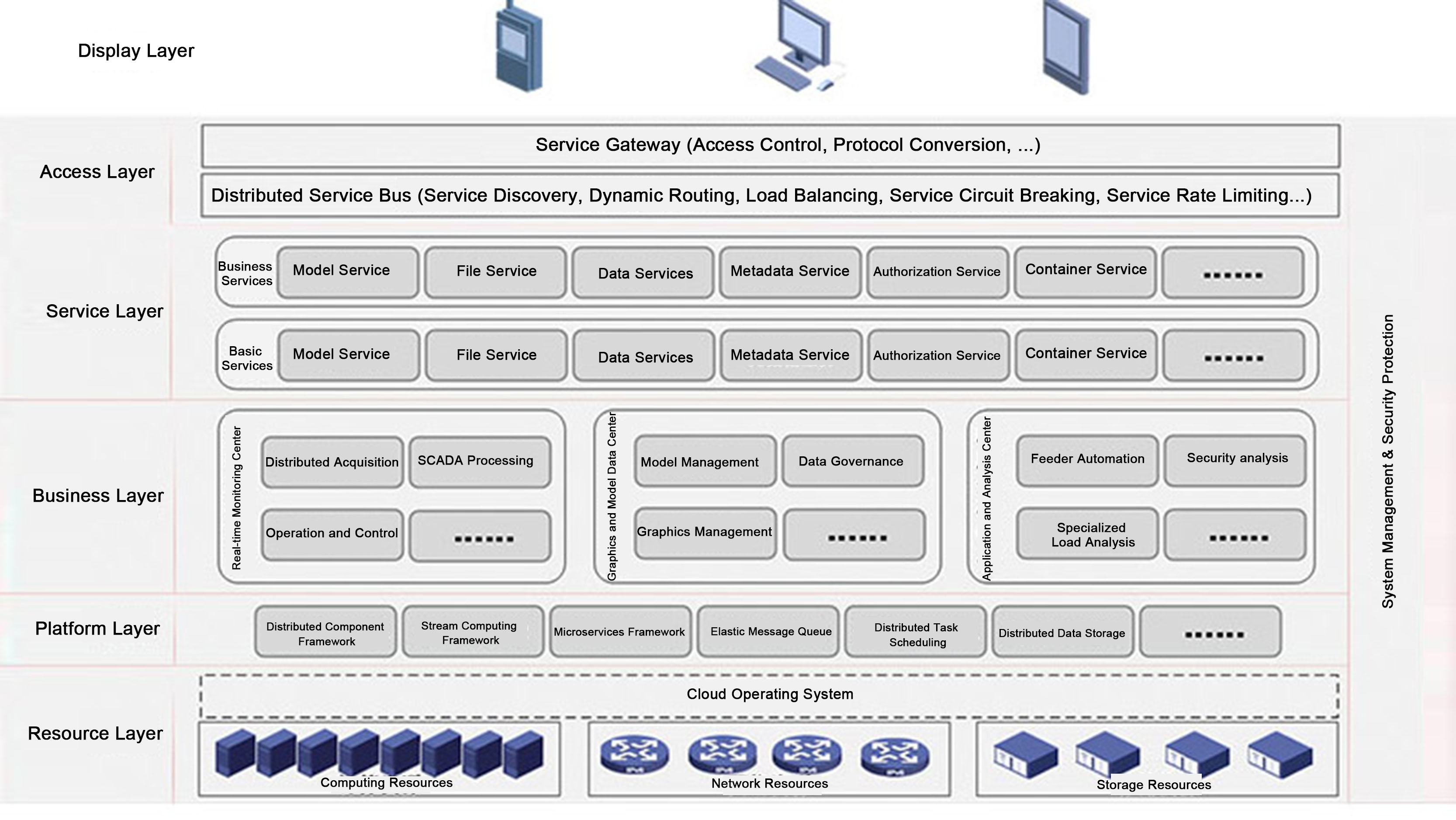The Elastic Dispatching and Control Support Platform is based on the advanced "Cloud-Native" design philosophy. It reconstructs traditional platform architecture using technologies such as containers, container orchestration, microservices, and service mesh to establish a data processing model and application support framework compatible with cloud computing. The platform breaks away from the centralized or grouped active/standby processing models of traditional monitoring software, implementing a cluster-based parallel processing model. This provides application systems with dynamic scalability for data acquisition, processing, and business services. Resource Layer: Provides the physical or virtual resources required for system operation, corresponding to conventional deployment and cloud computing deployment modes, respectively. In the cloud computing deployment mode, virtual resources are uniformly scheduled and managed through a cloud operating system.
